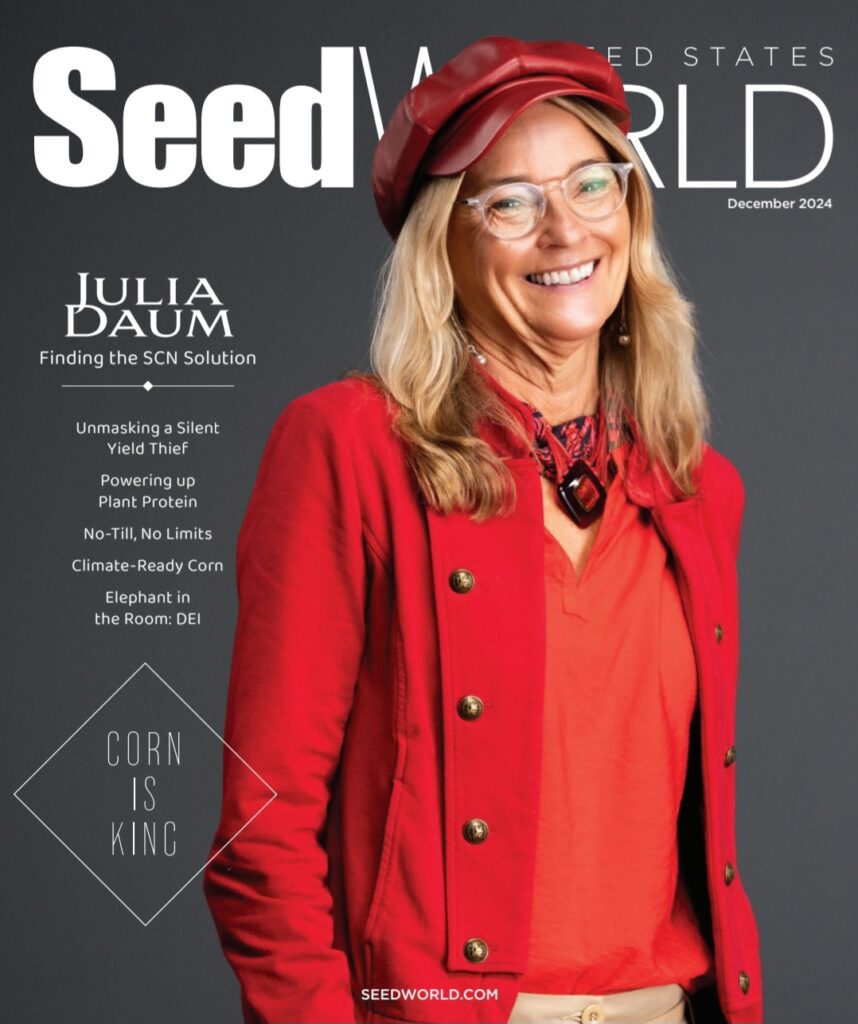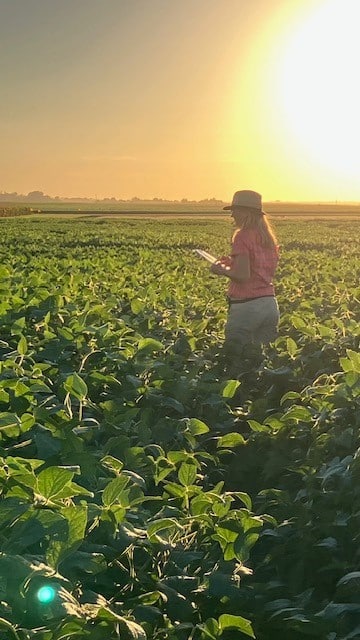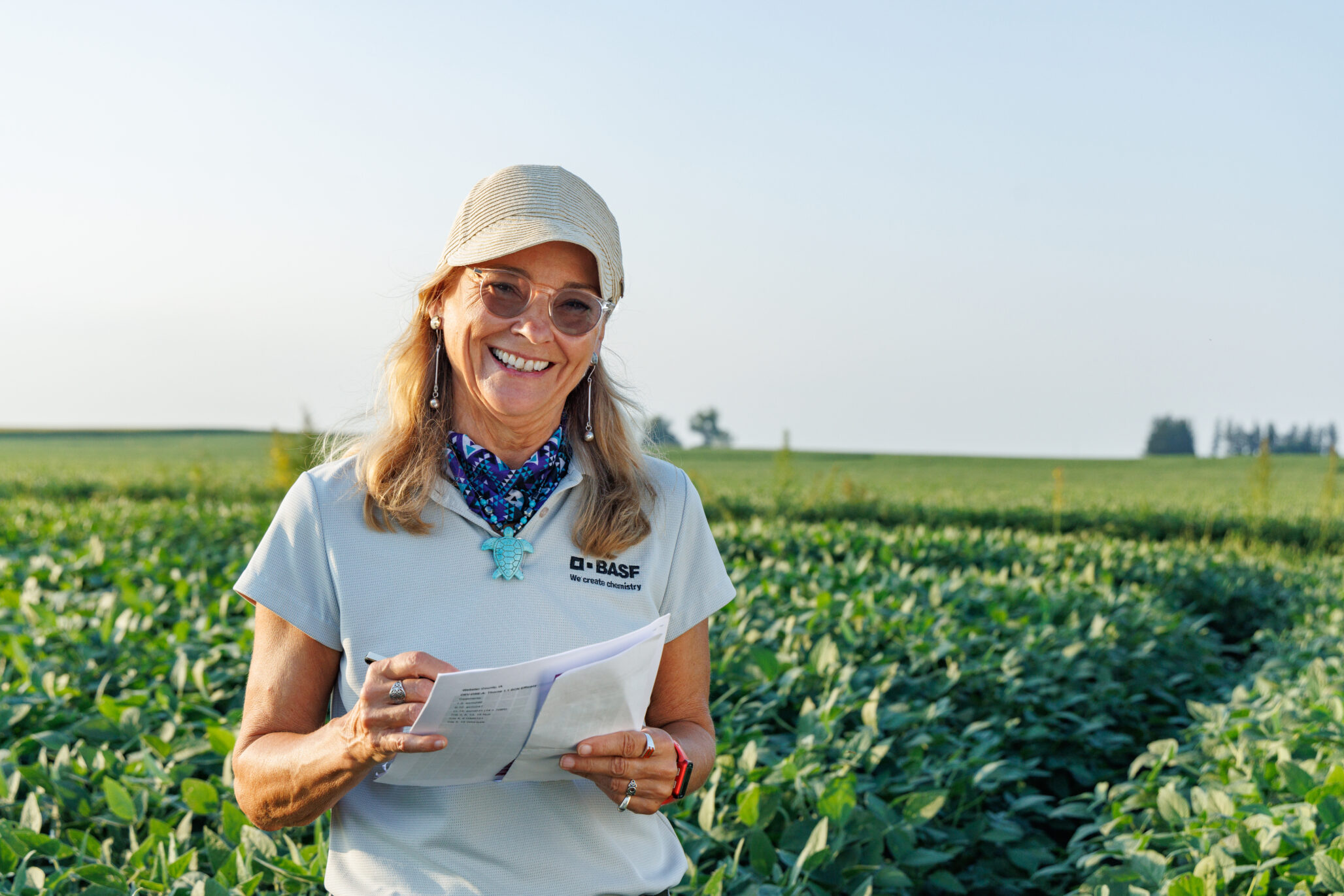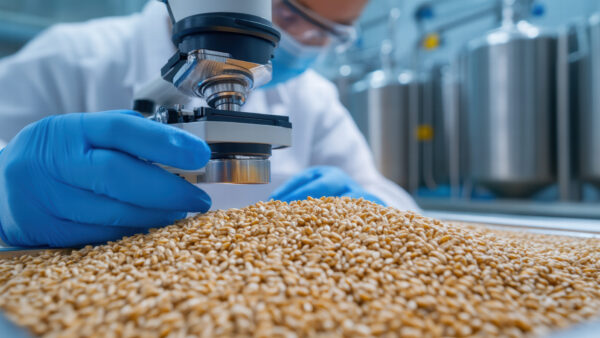Research scientist Julia Daum’s life’s work culminates in the first SCN trait to come to market in more than 60 years.
Research science may seem like an unseen, almost secretive art. Yet, for Julia Daum, a research scientist and manager at BASF, it’s a passion that has shaped her career and fueled a quest to develop innovative solutions for farmers worldwide. Hailing from Iowa and journeying through academic and corporate corridors, Daum’s story is one of perseverance, passion and an unwavering commitment to pushing the boundaries of plant science.
“I grew up in Iowa,” Julia begins, leaning into her story with an easy smile. She holds a bachelor’s and a master’s degree in food technology from Iowa State University (ISU), and what she always wanted to do, she explains, was research — real, hands-on and meaningful research.
Her path, however, took a few twists before leading her to BASF and the discovery of a groundbreaking nematode control trait that’s poised to shake up the nematode control fight.

A Curious Mind in the Lab
After graduating from ISU, the next step in her journey took her to the University of Toledo in Ohio, where she immersed herself in nematology research, first as a research technician and later earning a Ph.D. in the biology. She wasn’t studying plants at that time but instead delving into animal parasitic nematodes, which gave her a unique perspective.
“I worked there for quite a few years,” she recalls, saying the experience was foundational, even if not directly tied to plant breeding, as it provided her with the skills she would later use to solve complex agricultural challenges.
Daum’s career then led her into a postdoctoral position, which she humorously describes as a way to delay “growing up.” This phase of her life wasn’t directly tied to agriculture, as she moved into the field of cancer biology, first at Duke University and then at Eli Lilly and Company. There, she honed her skills in hypothesis-driven research, a discipline she describes with enthusiasm.
“It was lab work. I love lab work. I love big numbers,” she says. This part of her journey reflects Daum’s penchant for diverse experiences and her willingness to embrace different scientific challenges, each adding another layer to her expertise.
But Julia’s return to agriculture was inevitable. She found herself drawn back to plant science, where her early knowledge of nematodes and greenhouses and her passion for high-stakes research came together at BASF.
Navigating the Challenges of Scientific Breakthroughs
Most great R&D ideas encounter challenges along the way, and Daum’s path to discovering a potential solution to the soybean cyst nematode was anything but straightforward. But despite the bumps along the nearly two-decade-long road, two things did not change: Daum’s passion for science and relentless focus to find a novel solution for SCN control, and the camaraderie with colleagues who shared the same intense focus.
“I always had people who were incredible scientists around me, and we really worked well together,” she says with admiration for her teammates. “For me, it’s important to have an environment where you are surrounded and supported by brilliant colleagues who provide input, details, thoughts, and direction from their areas of expertise as we navigated through the complex problem we were working to solve. Our success with Cry14Ab is the result of the input from many colleagues bringing their expertise to the project that allowed the progression and eventual success in creating the product, Nemasphere.”

The Breakthrough Moment
In 2009, Daum’s team managed to get their trait into a plant, marking a significant milestone. From there, the project went through multiple phases, evolving with BASF’s strategic shifts and enduring the painstaking process of field trials, program developments and relentless tweaking. The ultimate goal? To develop a product that could provide effective nematode control — a persistent problem for farmers that affects crop yields and soil health worldwide.
While her work with the Cry14 protein may seem highly technical, she explains it with clarity and purpose. The stakes were high, and the team faced the challenge of deciding the direction to pursue.
“We started with one plan, but as we learned more about the Cry14, we adopted and incorporated those learnings to create the final product,” she recalls, emphasizing the fluidity required in scientific research.
The persistence paid off, and after nearly 20 years, Daum could finally see the light at the end of the tunnel. “I’ve seen many projects that never see the light of day for one reason or another,” she says. “And this one has always just been the one that keeps moving.”
A Legacy in the Making

What sets Daum apart is not just her scientific acumen but her humility and grounded approach to her work. Even as she stands on the cusp of a groundbreaking achievement, she expresses excitement not for herself but for the broader impact her work will have.
“It’s really exciting,” she says, “because someone in my field rarely sees something advance from the start to a finished product. Especially a trait — you know, there aren’t very many out there.”
The product is now patented, marking a rare achievement for any scientist, let alone one in an industry where projects are often shelved long before they reach the market. Daum speaks about the potential for this technology to transform nematode management and open up opportunities for other companies to partner with BASF.
“As far as I know, nobody else has even come close to advancing anything like this,” she says, underscoring the novelty of her work.
Words of Wisdom for the Next Generation
Reflecting on her career, Daum offers practical and heartfelt advice to those coming behind her. She encourages aspiring scientists to pursue what makes them happy.
“What I would say is, do what you like, and don’t put yourself in a job that doesn’t make you happy,” she advises. She emphasizes the importance of finding joy in the work, sharing that she’s driven by a love for science, not the accolades.













